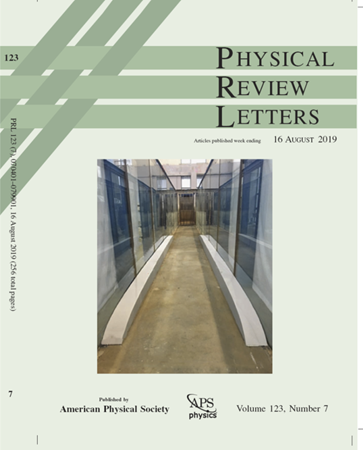磁约束聚变等离子体中的颗粒火箭效应
IF 9
1区 物理与天体物理
Q1 PHYSICS, MULTIDISCIPLINARY
引用次数: 0
摘要
冷冻物质的球团进入磁性受限的聚变等离子体,被所谓的球团火箭效应加速。不均匀的等离子体不对称地加热颗粒烧蚀云,产生压力驱动的、类似火箭的颗粒推进力。我们通过扰动球对称烧蚀模型,提出了这一过程的半解析模型。预测的粒子加速度与当前托卡马克的实验估计相符(~ 105m/s2)。对ITER高约束情景(~ 106 m/s2)的预测表明,在没有这种影响的情况下,颗粒穿透率明显低于预期,这可能会限制干扰缓解的有效性。2025年由美国物理学会出版本文章由计算机程序翻译,如有差异,请以英文原文为准。
Pellet Rocket Effect in Magnetic Confinement Fusion Plasmas
Pellets of frozen material traveling into a magnetically confined fusion plasma are accelerated by the so-called pellet rocket effect. The nonuniform plasma heats the pellet ablation cloud asymmetrically, producing pressure-driven, rocketlike propulsion of the pellet. We present a semianalytical model of this process by perturbing a spherically symmetric ablation model. Predicted pellet accelerations match experimental estimates in current tokamaks (∼105m/s2). Projections for ITER high-confinement scenarios (∼ 10 6 m / s 2 Published by the American Physical Society 2025
求助全文
通过发布文献求助,成功后即可免费获取论文全文。
去求助
来源期刊

Physical review letters
物理-物理:综合
CiteScore
16.50
自引率
7.00%
发文量
2673
审稿时长
2.2 months
期刊介绍:
Physical review letters(PRL)covers the full range of applied, fundamental, and interdisciplinary physics research topics:
General physics, including statistical and quantum mechanics and quantum information
Gravitation, astrophysics, and cosmology
Elementary particles and fields
Nuclear physics
Atomic, molecular, and optical physics
Nonlinear dynamics, fluid dynamics, and classical optics
Plasma and beam physics
Condensed matter and materials physics
Polymers, soft matter, biological, climate and interdisciplinary physics, including networks
 求助内容:
求助内容: 应助结果提醒方式:
应助结果提醒方式:


